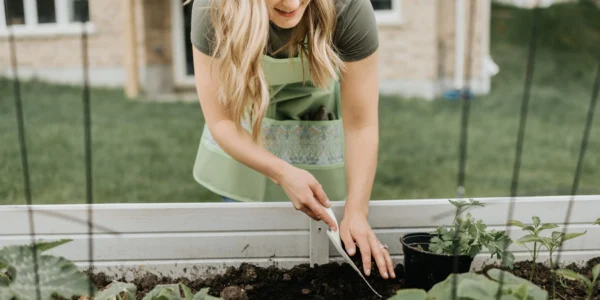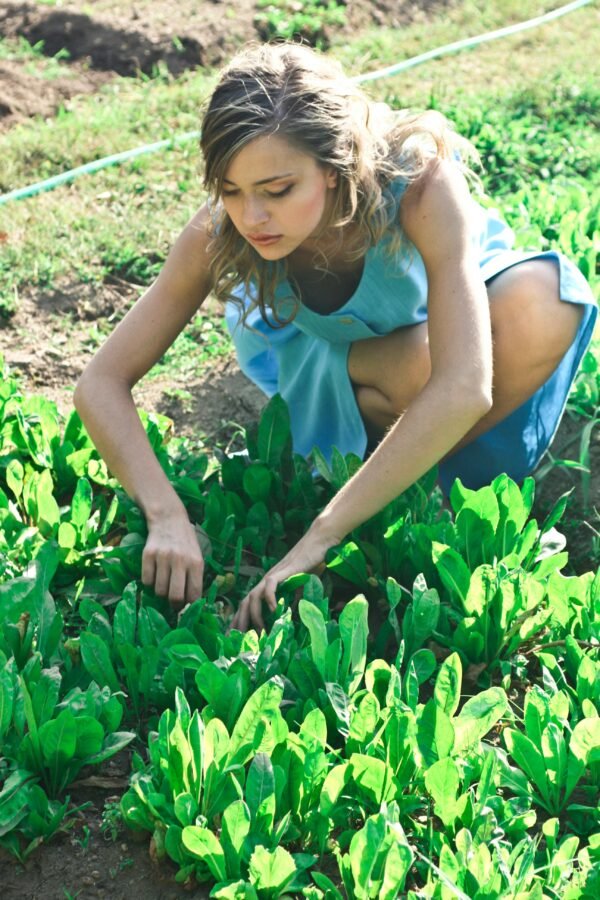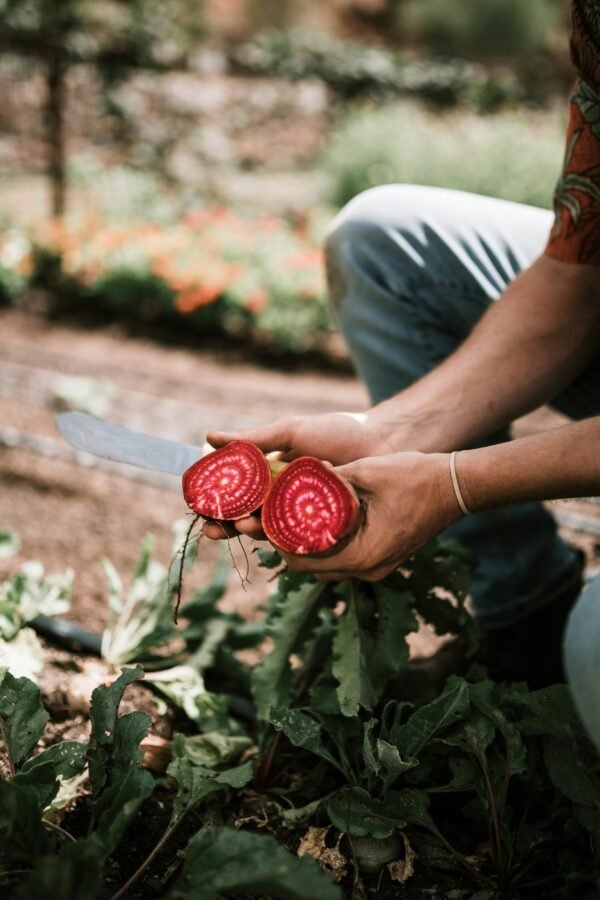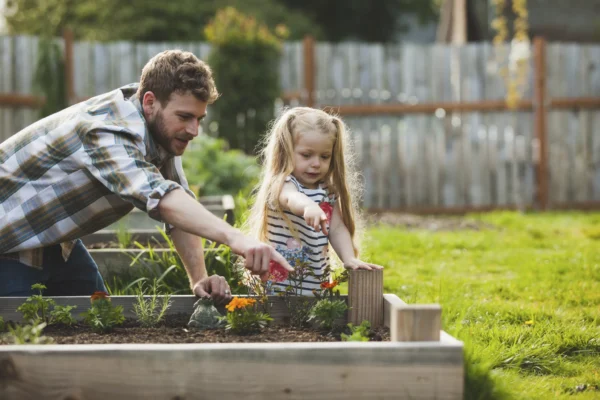
Green Heaven: Where Every Bud Blossoms and Every Leaf Tells a Story

Welcome to the world of gardening! Where every sunrise brings the promise of new growth and every sunset whispers tales of nature’s beauty. Join us on a journey of the gardener’s life, where dirt-stained hands and a heart full of love for the earth are the only tools we need.
Gardening isn’t just about growing plants; it’s about cultivating a deeper connection with the natural world. Watching a pleasing moment of seedling sprout to the satisfaction of harvesting your organic vegetables, gardening offers countless benefits for both body and soul.
Why Adopt a Sustainable Way of Life?

Gardening provides a calm heaven in a world full of rush and hustle, an opportunity to reconnect with the land and feed the spirit. Every minute spent in the garden is a present waiting to be opened, from the colourful flowers to the calming sound of wind rustling through the leaves.
Here’s how it can be your oasis:
Stress Relief: Taking care of plants offers a peaceful diversion from busy routines. It can help you calm and refresh by lowering stress and promoting awareness.
Mindful Breaks: Including quick gardening activities in your daily routine diverts diversion from technology and time constraints. Watering plants or picking weeds for even a short can provide a mental reset that improves attention and productivity.
Physical Activity: Planting a garden is a low-impact way to be physically fit. Without a gym membership, activities like planting, weeding, and digging use different muscle areas and improve flexibility and strength
Benefits to Your Nutrition: Growing your plants will provide you access to wholesome, fresh food right at your door. Despite your hectic schedule, including local foods in your meals not only improves flavour but also guarantees a balanced diet.
Community Building: Planting a garden can help strengthen ties with nearby residents. A sense of friendship may be developed by sharing, gardening advice, and taking part in local gardening activities.
Simple Garden Design Tips:
To design a garden successfully, it’s crucial to first understand your space—consider its size, sunlight exposure, and soil quality. Next, divide your garden into areas for dining, relaxation, and plant beds.
When selecting plants, check for varieties that thrive in your climate and match your desired maintenance level. Plus, we need to transform the garden’s rubbish waste into compost for the soil. By following such simple guidelines, you can create a beautiful outdoor space that enhances your enjoyment of nature.
Essential Tools Every Gardener Needs:
- Hand Trowel: A small shovel for digging small holes and moving soil around.
- Pruning Shears: Scissors for cutting back plants and trimming off dead leaves or branches.
- Garden Gloves: Special gloves to protect your hands from dirt, thorns, and sharp objects in the garden.
- Garden Fork: A tool with sharp points used for digging and breaking up soil.
- Watering Can or Hose: Something to water your plants with, like a big watering can or a hose.
- Garden Spade or Shovel: A larger shovel for digging bigger holes or moving more soil.
- Pruning Saw: A small saw for cutting thick branches on trees or bushes.
- Rake: A tool with a long handle and teeth for cleaning up leaves and debris in the garden.
- Wheelbarrow or Garden Cart: A small cart on wheels for moving heavy things like bags of soil or plants.
- Garden Knife or Multi-Tool: A handy tool for cutting things like string or opening bags of soil.
Taking care of the Green Kingdom:
As the sun climbs, a gardener rolls up his sleeves and dives into the garden’s heart. With trusty tools and determination, he picks weeds, trim branches, and press seedlings toward the light with my trusted tools. A gardener undertakes every task with so much care, weaving love into them.
Harvest of the Heart:
As the day draws to a close and the shadows lengthen, it’s time to reap the rewards of a day well spent. With a basket in hand, they gather the fruits of my labour—ripe tomatoes, fragrant herbs, and bouquets of vibrant flowers. Every harvest proves that patience and persistence pay off, reminding us that the seeds we plant today will bring blessings tomorrow.
Pest and Disease Management:
Gardens face pest and disease challenges, but don’t worry! With some know-how and care, we can keep our gardens healthy. Here are simple tips to manage pests and diseases:
- Prevention: Choose disease-resistant plants, maintain garden cleanliness, and rotate crops.
- Early Detection: Regularly inspect plants for signs of pests and diseases.
- Natural Controls: Attract beneficial insects with flowers, use organic pesticides like neem oil, and practice companion planting.
- Cultural Controls: Rotate crops, use mulch, and employ companion planting to deter pests.
- Integrated Pest Management (IPM): Monitor pest populations and employ a combination of cultural, biological, and chemical controls as needed.
Seasonal Tips:
Changing seasons demand tailored care. In spring, it’s essential to prepare your garden for the growing season. To give nutrients to the soil, turn over garden beds, and add organic matter to enrich the soil.
To give warm-season crops like tomatoes, peppers, and eggplants a head start, start their seeds indoors. Watch the weather report and cover vulnerable plants with weather cloth or plastic pots to protect them from late freezing temperatures.
To promote healthy development, split crowded plants and trim any dead or broken branches from trees and shrubs. When the soil is sufficiently loose to work, immediately plant cool-season crops like lettuce, spinach, peas, and radishes in the garden.
You can also seek Seasonal Gardening Help to make your garden flourish in every season.

Guide for Various Plants:
- Tomatoes: Choose disease-resistant varieties and provide support for uncertain types. Plant in well-draining soil and provide consistent moisture.
- Lavender: Select a sunny location with well-draining soil. Trim spent flowers to encourage continuous blooming throughout the season.
- Strawberries: Choose a sunny spot and plant in raised beds or containers with well-draining soil. Mulch around plants to suppress weeds and retain moisture.
- Cucumber: Grow cucumbers in full light and rich, well-draining soil. Supporting structures like cages or fences are needed for vining cultivars. Maintain constant moisture in the soil to avoid bitter-tasting fruit.
- Lettuce: Grow in rich, well-draining soil; in warmer areas, give moderate shade. To encourage continuing development, keep the soil continually wet and collect leaves on a regular basis.
Conclusion

The life of a gardener is like a beautiful picture made with love, patience, and respect for the earth. It is a journey filled with beauty, wonder, and the simple joys of connecting with nature. So, whether you’re taking care of a small box of herbs by the window or managing a big piece of land, welcome the green life with open arms and an open heart, and see how the world becomes more beautiful around you.
The best gardens are the ones shared with others. There’s a garden waiting to be cultivated. Why not take on a green journey to nurture our plants, nourish our souls, and cultivate joy through gardening!














































